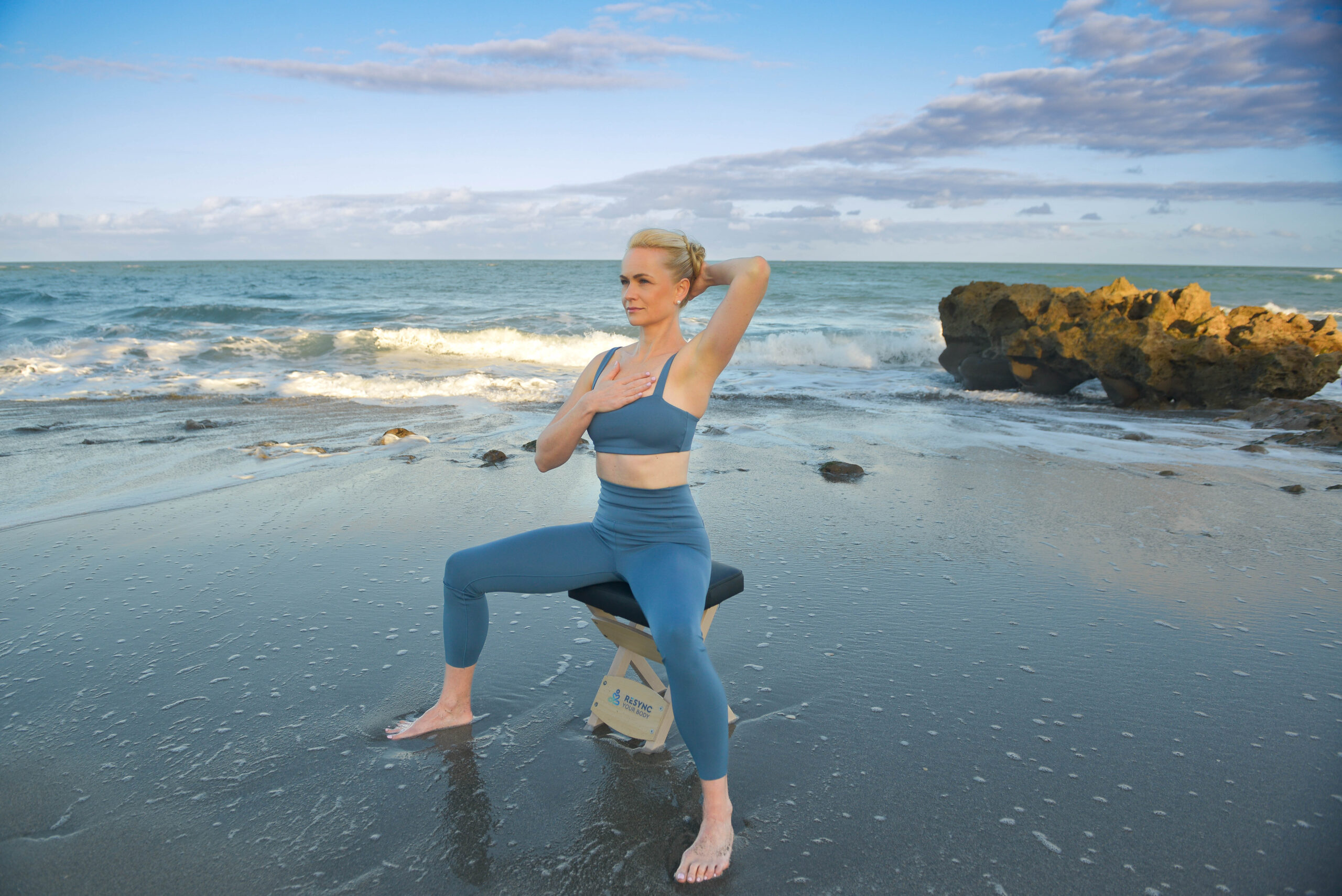GAIN A RESILIENT & PEACEFUL BODY
The Body You Want To Feel & Perform Your Best
“When you feel good, you make better decisions, you connect better with yourself and others. When your fascia system is dehydrated and undernourished, it impacts your neurovascular and muscular system and it stops you from feeling good”
– Barbara (Basia) Depta

Fascial & Neurovascular Tension Release
Head – Neck – Shoulders
Feel Peaceful & Resilient

Barbara’s Mission
Life is a movement, an ongoing learning journey, and a mindful self-care process.
Your body is your home. You deserve to feel good in your body.
I had the opportunity to recognize how the bodies of some of the best professional athletes and executives were filled with stress, pain, unresolved trauma, judgment, and overcompensated tissues that impacted them personally & professionally.
My mission is to help you feel your best in your body.

Take A Step Closer To The Mind-Body You Want To Feel & Perform Your Best
FASCIA-FOCUSED MOVEMENT
FASCIA & CARDIOVASCULAR
SUPPLEMENTS
SELF-GROWTH MINDSET
Frequently Asked Questions
What is a fascial workout?
Fascial workout or fascial fitness is very valuable to our entire body – all connective tissues, including fascia, tendons, ligaments, blood, nerves, cartilage, and bones as well.
Fascial workout does not replace conventional muscle training. Instead, it complements it with unique loading exercises, dynamic stretches as well as ‘bouncy’ movements that utilize and strengthen the elastic recoil properties of collagenous tissues like fascia.
It is recommended to workout your fascia and other collagenous tissues 3x a week for 10-15 minutes.
Fascial workouts can be short and powerful for your soft & hard skeleton. You will simply feel your best when you make fascial workouts part of your self-care routine.
Barbara Depta introduced fascial workout and fascial flexibility to PGA Tour Players & NFL athletes starting in 2010.
Tom Myers contributed to one of her first golf programs, “Flexible Body Fluid Swing,” where he explained which Anatomy Trains are involved in the golf swing.
After that, she created a patented fascial training and rehab tool, Core Boot, to help you create more resilient (stronger & more elastic) tissues through tailored exercises with different loading patterns.
Simply put, you gain an improved range of motion, starting with your feet and ankles.
Barbara believes that we are as good as our foundation, and when it comes to balance, strength, quickness & mobility, it all starts with our feet. And she believes everyone needs a strong foundation to feel their best.
How do you train your fascia muscles (myofascia)?
However, solo muscle-focused training is different from fascia-focused training. Muscles, for example, are trained with concentric, eccentric, and isometric exercises. Whereas, Fascia, and all its layers, including the deep fascia layer (myofascial), need different loading patterns (shear, gliding, compression, tensile stretch tensioning motions), direction, and tempo (slow & fast). It is essential to do strength training as well as fascial training. When you want to effectively train fascia, you need to think of whole-body movements, complex moves that require adaptation, starting with your feet.
Bouncing for example builds elasticity into the tendons, and the entire fascial system. Another example of fascial friendly movements are preparatory countermovements, for example, bending forward from your hips before extending up to standing position, will make maximum use of the power of fascial elasticity.
What exercises release the fascia?
When it comes to fascia release, frequently, gentle local “press & release “touch is more powerful than hard and deep push.
Recent science tells us that when using soft massage balls like the Resync Your Body ones, you get more fascial release than with large foam roller or hard tools which negatively impact fascia and your nervous system.
You may want to start by stepping on and off with your heel on Resync Your Body myofascial release ball for 10-30 seconds. This exercise will hydrate and release tension in your entire plantar fascia. You can start with heels and then move the ball to the ball of your foot to start feeling the improvements in ankle mobility.
Then you can start moving up the chain to your calves, hamstrings, lower back, mid-back, upper back, and neck as well. The gentle pressure of the ball will start breaking up fibrous adhesions between the fascial layers so your muscles can function better.
What is the fascia diet?
Fascia, just like other collagenous tissues, needs specific nutrients to stay healthy.
It is not as simple as eating a plant-based diet or becoming vegan. As plants do not have amino acids, your fascia & other connective tissues need them.
A diet that focuses on personal anti-inflammatory foods (remember, what’s anti-inflammatory to one person is not to another), which includes a full-spectrum of omega 3’s, a variety of plants, especially red veggies, like red spinach or berries, like Aronia – fundamental for building & supporting fascia with circulation.
However, it does not end here. Anthocyanins, catechins, and flavonoids (flavones, flavanone & cocoa flavanols) are very important for fascia health as well.
Also, to support fascia, you must eat foods high in collagen (type I, II, and III especially) with sulfur, copper, and vitamin C – fundamental tissue co-factors to feed & build your connective tissues. Without those, you don’t create collagen in your body.
It is also important to know what not to eat & what foods Fascia does not like.
Saturated fats and sugar are the top two that will cause inflammation and collagen glycation. Your body, over time, becomes brittle and susceptible to injury.
Get the most science-based data and easy-to-make fascia-friendly recipes to keep your fascia healthy here at Resync Your Body. Barbara has supported professional athletes with fascia-friendly nutrition & supplements since 2017.
What foods help with tight fascia?
Regarding specific foods fascia likes, you should consume red vegetables high in polyphenols like Aronia or red beets and red spinach in resync products.
Fascia also likes catechins, so foods like berries, cocoa, and tea are great for fascia. Yet be careful with sugar as the fascia does not like sugar – it creates inflammation and more adhesion in your fascia. You want to preserve the glide between your fascia & muscles, and sugar will give you the opposite – tightness and adhesions.
Additionally, amino acids are great for fascia, so eat your fish, lean meat & drink bone broth. To fully understand how you must pair up the elements to allow collagen production in the fascia & soft tissues, check out this class. https://resyncproducts.com/products/nutrition-for-soft-tissue-health-tendons-ligaments-fascia
Should I train my fascia?
Absolutely, you need to train your fascia. If you do not perform fascial training / fascial workout, your body will become brittle, breakable, and injury-prone. Also, when you do not pay attention to training fascia properties, your muscles will become weaker and tighter. Even the most recent research reinforces the importance of fascia in functional training (Fascia Congress 2009).
Does fascial training actually work?
Yes, Fascial training does work. Let’s start by saying that most sports injuries are connective tissue (fascial) injuries, not muscle injuries.
The less you hydrate your fascia through training and proper recovery, the less elastic response it has and the more connective tissue injuries you will face.
The best way to train your body to prevent injury or to quickly recover from an injury is for you to build elasticity and resilience by adapting different loading patterns that are fascia-friendly.
It is important to remember that there are 10 times more sensory nerve endings in your fascia than in your muscles. Fascia is the most sensory-rich organ and system of stability and mechano-regulation (Varela & Frenk 1987). If you want to gain dynamic stability in your body, starting with your feet, you must train fascia.
How can I improve my fascial fitness & fascia health??
Training your fascia 3x a week for 10-15 minutes will make your body more fluid and pliable. You will gain a bounce back in your gait. You can use Core Boot (fascial training & rehab tool) to apply bouncy movements to improve your fascial fitness & fascia health.
Start moving at different tempos and different angles. Fascia responds better to variation of movement than a repetitive movement program.
Check the Fascial Fitness Tab for fascia-friendly movement and tools.

